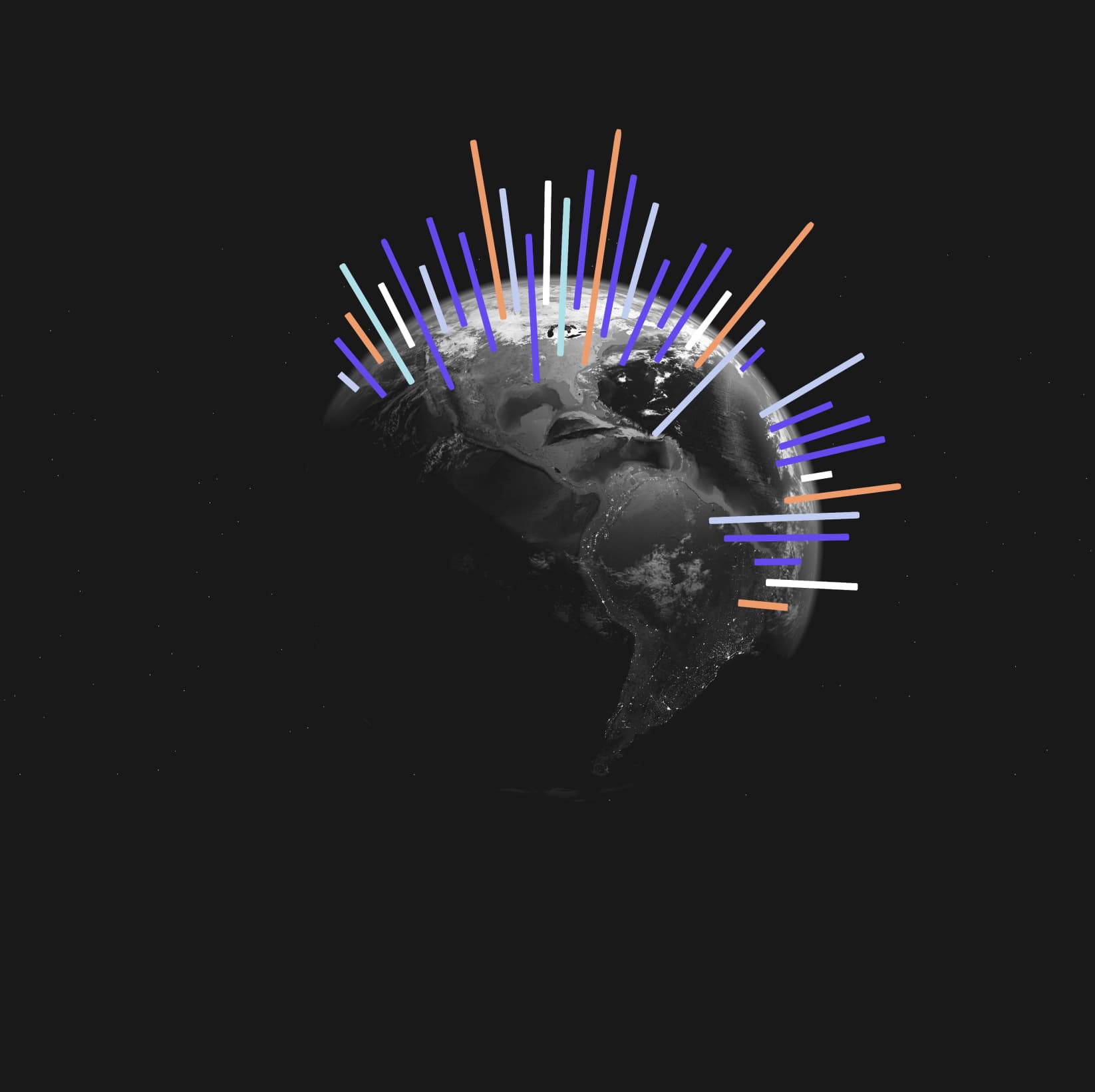Understanding and anticipating consumer trends is a critical aspect of success in the business world. To achieve this, businesses need a comprehensive toolkit that provides deeper insights into customer preferences and behaviors. This is where advanced customer segmentation analysis comes into play.
Advanced customer segmentation analysis goes beyond surface-level insights, diving deep into customer data to uncover hidden patterns and trends. By leveraging advanced analytics and predictive modelling tools, businesses can tailor their strategies to meet the unique needs of each customer segment, fostering loyalty and driving growth.
In this article, we will explore the concept of advanced customer segmentation analysis and its differentiation from traditional approaches. We will highlight the immense value it brings to businesses and its role in anticipating consumer trends. Additionally, we will discuss the contribution of market intelligence platforms like Trendata to business success in the ever-evolving modern environment. Let’s dive in!
Understanding Advanced Customer Segmentation Analysis
Customer segmentation analysis plays a pivotal role in helping businesses gain a deeper understanding of their target audience and develop effective marketing strategies. Advanced customer segmentation analysis takes this concept to the next level:
Advanced customer segmentation analysis can uncover micro-segments within larger segments, allowing businesses to identify highly specific customer groups with distinct preferences and behaviours. This level of granularity enables personalised marketing strategies tailored to individual customer needs.
Key Components and Techniques Involved in Advanced Customer Segmentation Analysis
Demographic Segmentation:
Demographic segmentation involves dividing the target market based on various demographic factors such as age, gender, income, education, and occupation. This segmentation approach provides a basic understanding of customers and allows businesses to create targeted messages that resonate with specific demographic groups.
Psychographic Segmentation:
Psychographic segmentation focuses on customers’ psychological and emotional characteristics, such as values, interests, lifestyles, and attitudes. It delves into the motivations, beliefs, and aspirations that drive consumer behaviour. By segmenting customers based on psychographics, businesses can create more impactful marketing campaigns that resonate on a deeper level.
Behavioural Segmentation:
Behavioural segmentation analyses customers’ past behaviours and actions, such as purchase history, online interactions, loyalty, and engagement. It identifies patterns and segments customers based on their buying habits, brand interactions, and response to marketing stimuli. This approach enables businesses to tailor their strategies based on customers’ actual behaviours, increasing the likelihood of delivering relevant offers and experiences.
Behavioural segmentation, a component of advanced customer segmentation analysis, focuses on customer actions and interactions with a brand. It allows businesses to understand not only what customers say they will do but also what they actually do. This data-driven approach enhances targeting accuracy and enables businesses to deliver relevant offers and experiences
Benefits of Advanced Customer Segmentation Analysis
Enhanced Customer Understanding:
Advanced customer segmentation analysis allows businesses to gain a holistic understanding of their customers by considering multiple factors simultaneously. This comprehensive view helps identify unique customer segments and their specific needs, preferences, and pain points. By understanding customers at a deeper level, businesses can develop more relevant and impactful marketing strategies.
Customised and Personalised Marketing Strategies:
Advanced customer segmentation analysis enables businesses to tailor their marketing messages, offers, and experiences to different customer segments. By delivering personalised and customised content, businesses can create stronger connections with their audience, increase engagement, and drive higher conversion rates. Personalisation creates a sense of relevance and shows that a brand understands and values its customers.
Improved Targeting and Segmentation Accuracy:
Advanced customer segmentation analysis leverages data-driven insights to create precise customer segments. By utilising advanced analytics and machine learning algorithms, businesses can identify hidden patterns and correlations within their customer data. This enables more accurate targeting, reducing wasted marketing efforts and improving overall campaign effectiveness.

Advanced Customer Segmentation Analysis vs. Traditional Approach
When it comes to understanding customer behaviour and developing effective marketing strategies, advanced customer segmentation analysis surpasses the limitations of traditional segmentation methods. While traditional segmentation provides a foundation for market targeting, it often falls short of capturing the nuances and complexities of consumer behaviour. In contrast, advanced customer segmentation analysis offers several distinct advantages that can revolutionise the way businesses engage with their target audience.
Traditional segmentation methods often rely on demographic and geographic data as primary criteria. However, advanced customer segmentation analysis goes beyond these factors and incorporates dynamic behavioural and psychographic data, providing a more comprehensive understanding of customers.
Traditional Segmentation Methods
Traditional segmentation methods typically rely on broad categorisations such as age, gender, and location to divide the market into segments. This approach provides a basic understanding of customer groups but lacks the depth required to truly understand individual preferences and behaviours. Traditional methods often utilise demographic and geographic data as primary segmentation criteria, allowing businesses to make general assumptions about their target audience.
Limitations and Challenges of Traditional Segmentation
While traditional segmentation has been used successfully in the past, it has notable limitations and challenges that can hinder its effectiveness in today’s dynamic business landscape. Some of the common limitations include:
Simplistic View of Customers:
Traditional segmentation tends to oversimplify the diverse nature of customer preferences and behaviours. It often fails to capture the intricate nuances and individuality of consumers within a specific segment.
- Static and Outdated:
Traditional segmentation models are often static and slow to adapt to changing consumer trends. They rely on historical data and assumptions, which may not accurately reflect current market dynamics or evolving consumer preferences.
- Limited Insights:
Traditional segmentation methods provide limited insights into customer motivations, values, and aspirations. They may overlook key factors that drive consumer decision-making and fail to identify emerging trends or opportunities.
Advantages of Advanced Customer Segmentation Analysis
Greater Granularity and Precision:
- Advanced customer segmentation analysis enables businesses to go deeper into customer data, uncovering micro-segments with distinct characteristics and preferences. This approach allows for more precise targeting and personalised marketing strategies that resonate on an individual level.
- Market Intelligence Through Data Analysis:
Unlike traditional segmentation, advanced analysis leverages market intelligence data to gain up-to-date insights into customer behaviours. This dynamic approach enables businesses to adapt their strategies quickly, respond to market changes, and stay ahead of the competition.
- Ability to Capture Evolving Consumer Behaviors:
Advanced customer segmentation analysis embraces the dynamic nature of consumer behaviours. It focuses on capturing evolving trends, preferences, and purchase patterns, allowing businesses to adjust their marketing efforts accordingly and engage with customers in a more relevant and timely manner.
Advanced customer segmentation analysis allows for more accurate targeting by identifying emerging consumer behaviours. Traditional segmentation methods may not capture evolving trends, but advanced analysis helps businesses stay attuned to the changing preferences and needs of their target audience

Anticipating Consumer Trends 2025
Understanding and anticipating future consumer trends is crucial for businesses to stay ahead in a rapidly changing marketplace. By 2025, advanced customer segmentation analysis is poised to play a vital role in predicting these trends by leveraging market intelligence insights. Through proactively analysing customer behaviour and preferences, businesses can make informed decisions and position themselves strategically to capitalise on emerging opportunities.
Role of Advanced Customer Segmentation Analysis in Predicting Trends
Advanced customer segmentation analysis provides valuable insights that can help predict future consumer trends. By analysing customer data and identifying patterns, businesses can:
- Identify Early Adopters:
Advanced segmentation analysis enables businesses to identify early adopters of new products, services, or trends. These customers often act as trendsetters, providing valuable signals about future market directions.
- Uncover Emerging Preferences:
By analysing customer behaviour, businesses can detect shifts in preferences and emerging trends. This allows them to proactively align their offerings with evolving customer demands.
Leveraging Data and Insights for Proactive Decision-Making
Data and insights derived from advanced customer segmentation analysis empower businesses to make proactive decisions. This includes:
Anticipating future consumer trends is crucial for businesses to stay ahead of the competition. Studies have shown that companies that are adept at predicting trends are 33% more likely to outperform their competitors in terms of revenue growth
Tailoring Marketing Strategies:
Advanced segmentation analysis helps businesses personalise their marketing strategies to cater to different customer segments. By aligning messaging, channels, and offerings, businesses can effectively engage with their target audience.
Product Development and Innovation:
Insights from advanced customer segmentation analysis can inform product development and innovation efforts. By understanding customer needs, businesses can create offerings that align with future trends, driving customer satisfaction and loyalty.
RELATED: 4 Key Brand Insights That Can Transform Your Business Strategy
Identifying Emerging Opportunities and Staying Ahead of the Competition
Advanced customer segmentation analysis enables businesses to identify emerging opportunities and gain a competitive advantage by:
Spotting Niche Markets:
By analysing customer segments, businesses can uncover underserved or niche markets that have the potential for growth. This allows for targeted marketing and tailored offerings to capture these market segments.
Anticipating Competitive Moves:
Advanced segmentation analysis helps businesses understand the competitive landscape. By tracking competitor behaviour and customer preferences, businesses can proactively respond to competitive challenges and differentiate themselves in the market.
RELATED: The Power of SWOT Analysis: How to Use it to Your Advantage
By leveraging data and insights from advanced customer segmentation analysis, businesses can make proactive decisions, adapt their strategies, and identify emerging opportunities. This proactive approach enables businesses to be at the forefront of industry shifts and capitalise on emerging trends.

Partnering with a Market Intelligence Platform
In the era of data-driven decision-making, businesses can benefit greatly from partnering with market intelligence platforms like Trendata. Trendata is a leading market intelligence platform that offers a wide range of features and benefits specifically designed to support advanced customer segmentation analysis, gain deeper insights, make informed decisions, and stay ahead in today’s competitive landscape.
Trendata, The Ultimate Market Intelligence Platform
Trendata is a robust market intelligence platform that empowers businesses to unlock their full potential. It provides a comprehensive suite of tools and features to facilitate advanced customer segmentation analysis, enabling businesses to understand their customers at a granular level. Trendata offers a user-friendly interface and a powerful analytics engine, making it an invaluable resource for businesses seeking to gain actionable insights.
Features and Benefits for Advanced Customer Segmentation Analysis
Data Aggregation and Integration Capabilities:
- Trendata aggregates and analyses over 5 billion search queries daily, providing businesses with a comprehensive view of their business, their category and their products. This comprehensive view of data enables a holistic understanding of customers, providing a solid foundation for advanced segmentation analysis.
- Advanced Analytics and Predictive Modeling Suite:
Trendata provides advanced analytics and a predictive modelling suite that enables businesses to uncover hidden patterns, correlations, and trends within their customer data. This suite employs sophisticated algorithms to identify customer segments, predict future behaviours, and generate insights for strategic decision-making.
- Visualisation and Reporting Functionalities:
Trendata offers powerful visualisation and reporting functionalities that transform complex data into easy-to-understand visual representations. Businesses can create interactive dashboards, charts, and graphs to visualise customer segments, trends, and performance metrics. These visualisations facilitate clear communication and help stakeholders grasp insights quickly.
By partnering with Trendata, businesses can benefit from:
Actionable Insights:
- Trendata empowers businesses to derive actionable insights into their customer segments, enabling them to make informed decisions that drive growth and improve customer experiences.
- Efficiency and Time Savings:
The platform automates data analysis processes, saving businesses valuable time and resources. This allows teams to focus on strategic initiatives rather than manual data processing.
Competitive Advantage:
Trendata equips businesses with a competitive edge by providing advanced analytics capabilities that enable them to identify emerging trends, capitalise on market opportunities, and stay ahead of the competition.
RELATED: Discovering the Best Consumer Insights Companies for Your Business
Closing Thoughts…
The importance of advanced customer segmentation analysis cannot be overstated. It empowers businesses to gain a holistic understanding of their customers, develop customised marketing strategies, and stay ahead of the competition. Just as a skilled gardener tends to each plant’s unique needs, businesses can nurture their customer relationships, fostering growth and loyalty.
It’s time for you to embrace this emerging trend, and watch your business flourish in the ever-changing landscape of consumer behavior.







